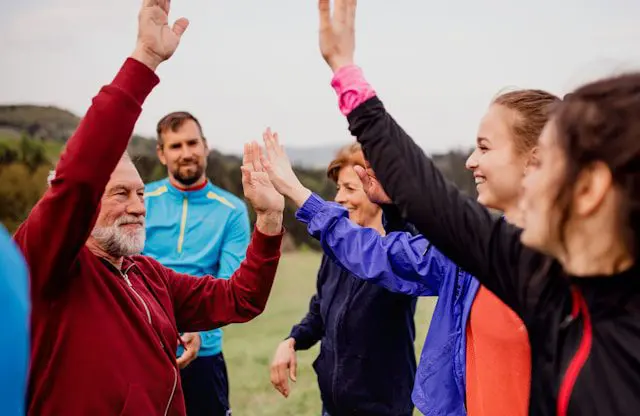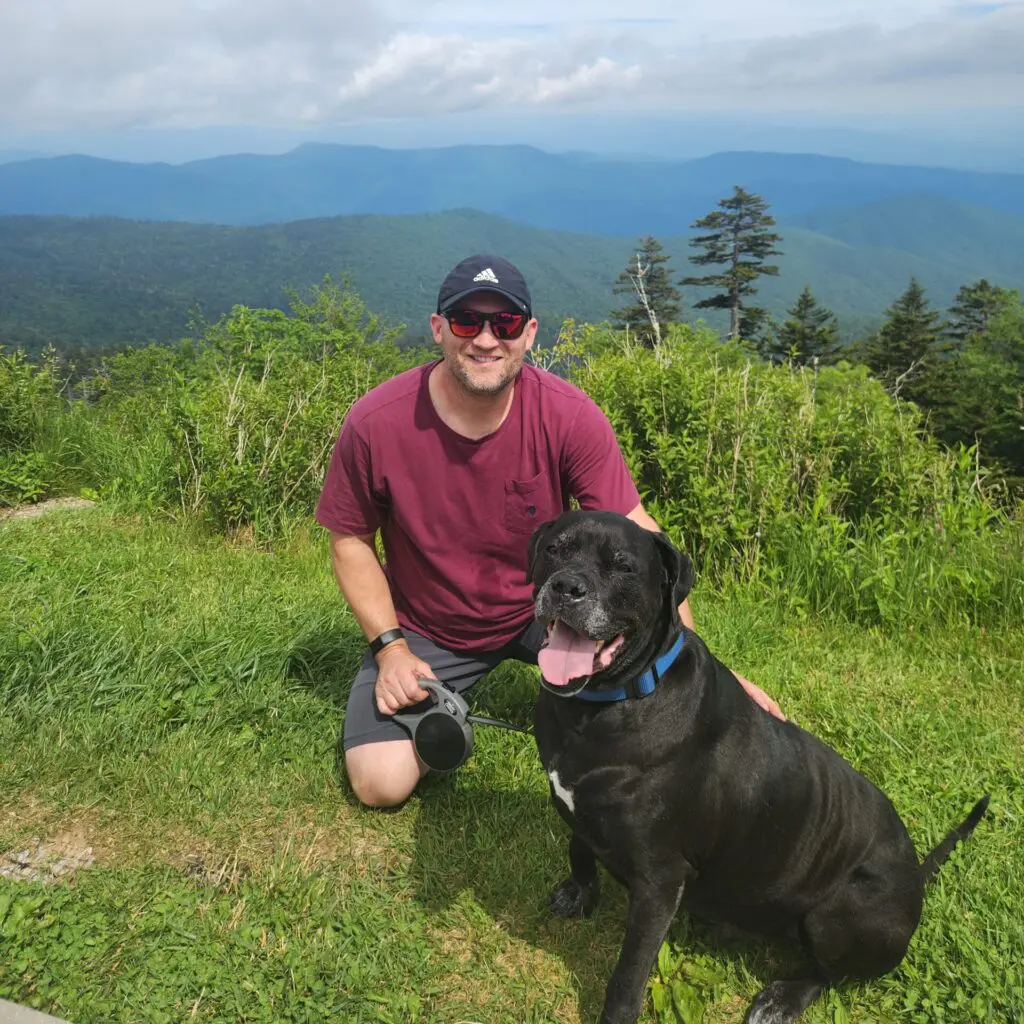Want to break free from your daily coffee habit while minimizing withdrawal symptoms and keeping your morning energy? This guide will show you how to quit coffee or cut back your caffeine intake. You’ll learn a practical approach combining two key strategies:
- Gradually reduce your coffee intake to minimize withdrawal symptoms
- Build new routines that give you natural, sustainable energy

According to this clinical dietitian at Henry Ford Health, “Intentionally cutting back does have benefits and can be done successfully.”
Why Is Coffee Hard to Quit? | Benefits of Quitting | What to Expect | How to Quit | FAQs | Wrapping Up
Why Coffee Makes You Feel Like You Need It
First, let’s understand what makes coffee so hard to give up.
How Coffee Changes Your Brain and Body
Coffee’s main ingredient, caffeine, tricks your brain. Here’s how:
- It blocks the chemical, adenosine, that makes you feel tired from working on brain cells
- It tells your body to release stress hormones that make you feel alert
- It triggers feel-good chemicals like dopamine that make you want more coffee
How to Tell If You Depend on Coffee
Think of coffee like hitting your brain’s energy “boost” button. The problem? Per Dr. Sergi Ferre, a brain scientist at NIH, “The body adapts.”
Your brain adapts by creating more “tired” adenosine receptors, which means you need more coffee to feel the same effect.
Symptoms of coffee dependency:
- Can’t feel awake without your morning cup
- Get headaches 12-24 hours after skipping coffee
- Feel anxious or shaky after drinking too much
- Crash in energy 4-6 hours after drinking coffee
- Have trouble sleeping even when tired
What You’ll Gain by Quitting Coffee
Now that you understand how coffee affects you, let’s look at the rewards that await when you break free from it.
Benefits in Your First Month
- Wake up feeling refreshed instead of groggy
- No more mid-afternoon energy crashes
- Fall asleep more easily at night
- Feel less anxious and jittery
- Enjoy better digestion
Benefits After Your First Month
- Maintain steady energy all day without peaks and crashes
- Handle stress better without stimulants
- Lower your blood pressure naturally
- Absorb more nutrients from food
- Keep your teeth whiter
- Save money
What to Expect When You Quit
Let’s be honest about the challenges ahead. Knowing what to expect will help you prepare and persist through temporary discomfort.
Withdrawal Symptoms
Let’s be realistic. “Someone’s energy levels will drop when they quit caffeine, at least initially,” says registered dietician Rachel O’Connor.
When you reduce coffee, you may experience:
- Headaches (starts 12-24 hours after last coffee, peaks at 20-48 hours)
- Tiredness
- Irritability
- Trouble focusing
- Mild sadness
- Slight muscle soreness
- Lower motivation
These symptoms happen because your brain is adjusting to working without coffee. They typically last 2-9 days, depending on how much coffee you currently drink. It’s important to stay focused on the whys behind your quitting during the withdrawal phase.

How to Quit Coffee Successfully
This plan combines gradual coffee reduction with new energy-boosting habits. You’ll build these habits before reducing coffee, making the transition easier.
Phase 1: Build Your Foundation (Week 1)
During this week, you’ll keep drinking your usual coffee while preparing for success.
Track Your Current Habits
- Write down:
- How many cups you drink per day
- When you drink them
- How you feel before and after each cup
- Where and why you drink coffee (morning routine, work breaks, social time)
- Calculate your daily caffeine per day:
- Regular coffee (8 oz) = 95-200mg
- Espresso shot = 63mg
- Cold brew (12 oz) = 150-240mg
- Latte (16 oz) = 150mg
- Green tea (8 oz) = 35mg
3. Total your daily intake.
Stock Your Coffee Alternatives
Herbal Teas
- Peppermint tea: Natural energizer that improves focus
- Ginger tea: Boosts circulation and reduces inflammation
- Rooibos tea: Rich in antioxidants with a mildly sweet flavor
- Chicory root tea: Tastes like coffee
Golden Milk
What it is: A warm drink made with turmeric, cinnamon, and milk (dairy or plant-based). Recipe here or buy it pre-made.
Why it helps:
- Reduces inflammation
- Provides steady energy
Smoothies
Why they help:
- Easy source of antioxidants and fiber. Just throw your favorite combinations of fruits and veggies into a blender
- Gut healing
- Improved digestion

Sparkling Water
Why it helps:
- The fizz provides a wake-up sensation
- Helps you stay hydrated
- Natural flavors for variety
Decaf Coffee (Optional)
Why it helps:
- Maintains the coffee ritual with less caffeine (2-12mg per cup)
- Useful during gradual reduction
- Satisfies the taste and smell you enjoy
Build Your Support System
- r/decaf subreddit or Caffeine Addicts Anonymous
- Tell family and friends why you’re quitting
- Find a quitting buddy
- Share your plan with supportive coworkers

Phase 2: Gradual Reduction (Weeks 2-5) and New Energy Routines
This phase overlaps with building new energy routines. Start your new routines at the same time while you work on cutting out coffee.
Week 2: First Reduction (25% Less)
Example for 4 cups daily:
- Reduce to 3 cups total
- Cut out your last coffee of the day (helps sleep)
- Replace removed cup with an alternative
Why this works:
- Maintains most important coffee when you need it
- Removes coffee that most disrupts sleep
- Gives your body time to adjust
- Lets you practice using alternatives
Week 3: Second Reduction (50% Less)
- Reduce to 2 cups total, or one cup full caffeine and two cups half-caf
- Cut out your last two coffees of the day
- Begin to incorporate energy-boosting activities throughout your day
Week 4: Third Reduction (75% Less)
- One cup only (morning), or two cups of half-caf
- Replace other cups with alternatives
- Continue working on new energy routines
- Begin working on stress management activities
Week 5: Final Transition
- Completely switch to decaf or other alternatives
- Rely mainly on your new energy boosting routines
- Use support system actively
- Celebrate your progress!
Your New Energy Routines
Start building these routines early on and strengthen them during reduction.
Morning Energy Routine
Why it matters: Your morning sets your energy pattern for the day.
- Hydrate (First 15 Minutes)
- Drink 16oz water first thing
- (Optional) Add lemon for taste and vitamin C
- Why: Rehydrates your body after sleep
- Get Natural Light (15-30 Minutes)
- Open curtains or step outside. If you are dealing with dark and cold winters, try light therapy
- Why: Signals your brain to wake up naturally and helps set your body’s daily rhythm
- Move Your Body (10-20 Minutes)
- Gentle stretching
- Short walk
- Yoga
- Why: Boosts circulation and energy
- Eat an Energizing Breakfast
- Complex carbs (oats, whole grain toast)
- Protein (eggs, yogurt, nuts)
- Fruit for natural sugars
- Why: Provides steady energy release

Maintain Energy All Day
- Take Movement Breaks
- Stand and stretch every hour
- Walk or pace during phone calls
- Use a standing desk part-time
- Why: Movement fights fatigue better than caffeine
- Use Natural Focus Boosters
- Work in 25-minute blocks, with rest breaks in between
- Take real lunch breaks
- Step outside for the benefits of fresh air
- Why: Intermittent breaks match your brain’s natural focus patterns
- When you feel tired
- Drink water. Learn more about the benefits of staying hydrated
- Eat a plant-based snack for steadier energy and better health
- Take a short walk
- Do 2 minutes of deep breathing or practice meditation
Managing Common Triggers to Drink Coffee
- Morning Grogginess
- Go to bed and wake up at the same time. Learn more about bedtime routines for better health
- Keep your wake-up routine consistent: hydrate, sunlight, and exercise
- Why: Creates reliable energy patterns your body needs
- Daily Stress
- Keep alternative beverages within easy reach
- Learn simple breathing exercises
- Take brief breaks before stress builds
- Why: Manage stressful triggers early on before they get larger and make it harder to avoid coffee
- Social Situations
- Know your coffee-free options nearby
- Suggest walk-and-talk meetings
- Share your quit journey positively
- Why: Maintains connections without coffee

Common Questions on How to Quit Coffee
How long until I feel normal?
In the first week, you’ll experience physical withdrawal symptoms like headaches and fatigue, typically lasting 2-9 days. Your energy levels will begin adjusting during weeks 2-4 as your body learns to maintain alertness without caffeine. Most people find their new habits feel natural after 4-6 weeks, with continued improvements in sleep quality and natural energy patterns.
Will I feel tired at work?
You’ll likely experience some tiredness at work during the first two weeks after quitting coffee. This temporary fatigue happens as your body adjusts to producing energy without caffeine. Try starting your coffee reduction during a period of lighter workload or while on vacation. Using the gradual reduction method and natural energy techniques can help maintain your productivity during the transition.
Can I drink decaf?
Decaf coffee can be a helpful tool when quitting regular coffee. It contains very little caffeine (2-12mg compared to 95-200mg in regular coffee) while maintaining the familiar taste and ritual of coffee drinking. Many people successfully use decaf as a steppingstone in their quitting journey, as it helps with the psychological aspects of breaking the caffeine habit.
What if I slip up?
Having a cup of coffee during your quitting journey isn’t a failure. Your body has still made progress in adjusting to less caffeine, and one cup won’t erase that progress. Simply return to your reduction plan immediately and try to understand what triggered the craving. Use this insight to strengthen your alternative routines and prepare better for similar situations in the future.

Wrapping Up: Get Started Now
Breaking free from coffee dependency is achievable with proper planning, support, and patience. Focus on building sustainable new habits while gradually reducing intake. Remember that temporary discomfort leads to lasting benefits.
Ready to start your journey? Start now – observe and document your current coffee habits. Small steps lead to big changes.
More from Bananomad
- Interested in the taste and health benefits of sourdough but don’t know where to begin? Follow our guide to sourdough bread for beginners and learn what you need to know.
- Canned or fresh vegetables? Compare 10 popular foods and learn the verdicts.
- Want to know what to pack for Hawaii besides sunscreen and swimsuits? Get advice on what the locals recommend.


Leave a Reply